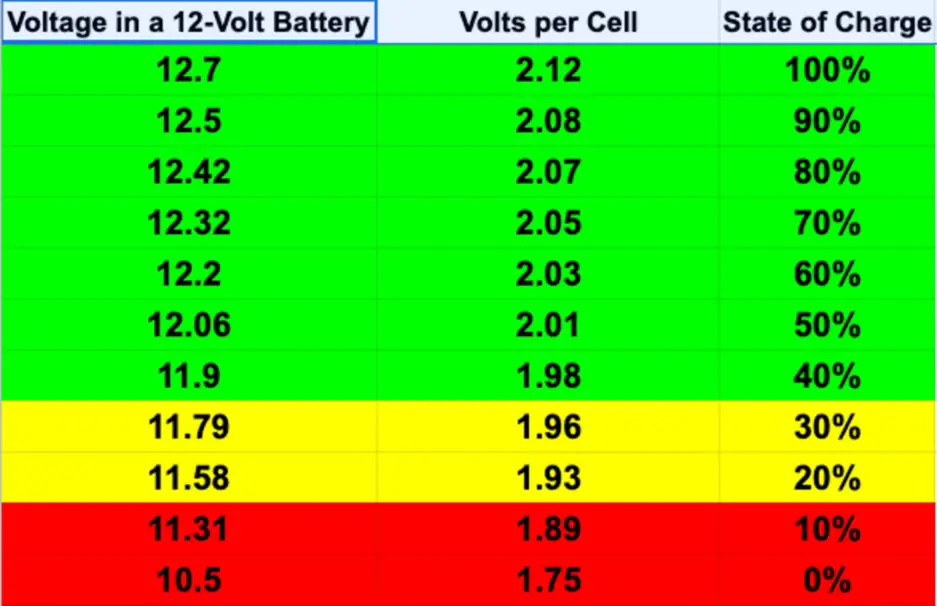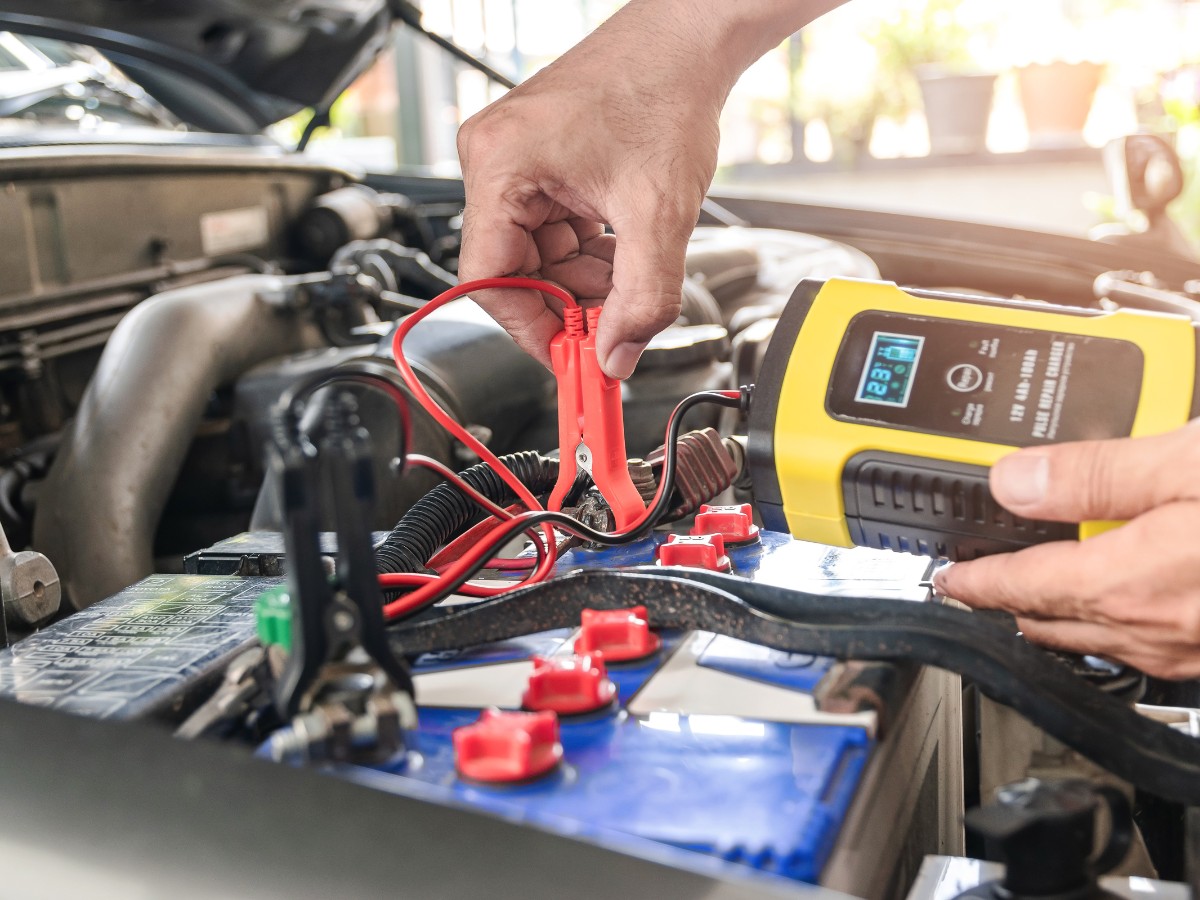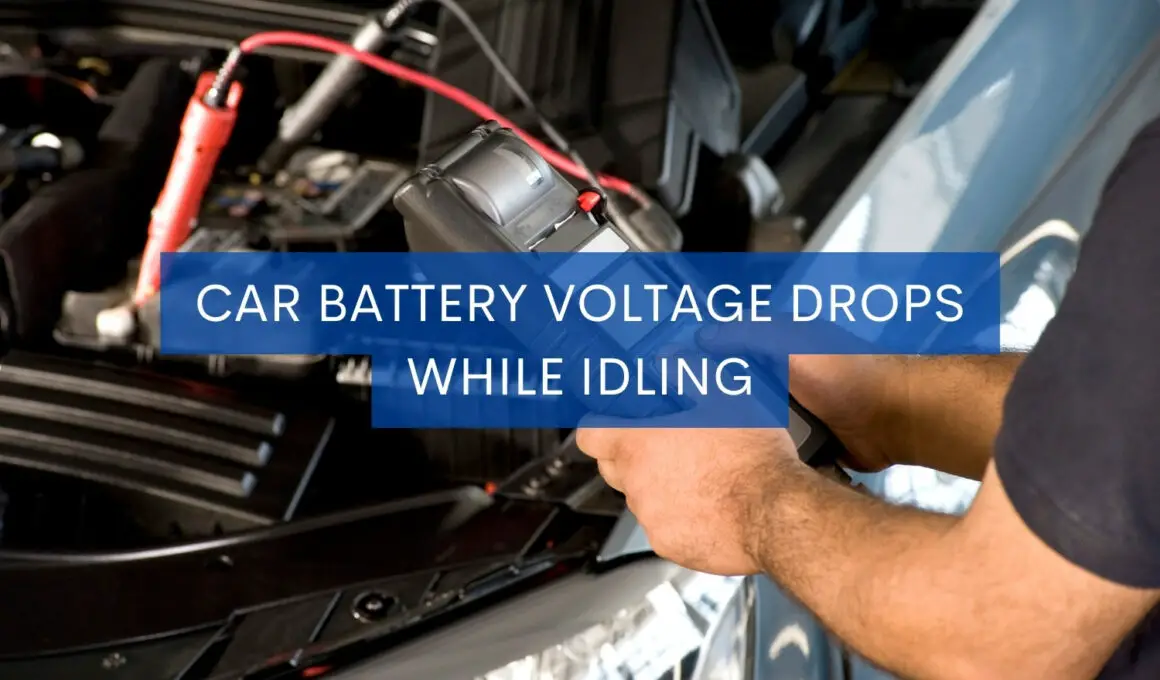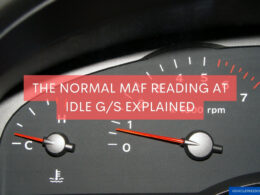In This Article Show
Baffled by your car battery’s voltage drop while idling? Don’t worry; we’ve got your back! Unravel the mystery behind this common issue and discover the best fixes in our comprehensive guide.
When the car battery voltage drops while idling, an alternator is likely the culprit. However, in some cases, loose connections, increased load, parasitic drain, or bad battery can also cause this.
Further, we will explore the nominal battery voltage and six reasons why the battery voltage drops while idling. We will also suggest some fixes to address the issues.
Understanding Car Battery Voltage: Nominal Values and Their Significance
Car battery voltage is a critical factor in the performance and reliability of your vehicle’s electrical system.
The rated voltage for most vehicles is 12 volts. However, the actual voltage of a car battery can fluctuate within a specific range, depending on its state of charge and the electrical load on the system.
For instance, when not under load, a fully charged 12-volt lead-acid battery has a resting voltage of approximately 12.6 to 12.8 volts. As the battery discharges, its voltage will decrease, dropping to around 10.5 volts when it’s almost empty.
The following chart shows a drop in voltage as a function of battery percentage values:

6 Reasons Why Battery Voltage Drops During Idling
The vehicle’s electrical components rely on a stable voltage supply to function correctly. If it drops during idle, it indicates some underlying that needs to be fixed before the problem spreads and fails the battery.
Here are six reasons why a car battery light may turn ON during idling:
1. Bad Alternator
In most cases, a bad alternator is the cause of voltage drop. The alternator is the main component that charges your car’s battery and powers all of the electrical accessories within your car.
The engine drives the alternator via a belt, commonly known as the serpentine belt. As the engine rotates, it turns the belt, spins the alternator’s rotor, generating electricity via electromagnetic induction.
When the alternator’s belt cracks or the voltage regulator fails it doesn’t supply sufficient voltage, leading to a voltage drop while idling. In that case, you may witness other signs as well such as dimming headlights, dashboard lights, or an illuminating battery warning light.
How to a Fix an Alternator?
The may have a worn belt or its voltage regulator may have malfunctioned. First, do a general inspection visually, then test out its voltage values through a multimeter.
General Inspection for Wear and Tear:
- Inspect the alternator’s belt for signs of wear. Check if bears any cracks
- Hold the see if it feels loose. It shouldn’t have a tolerance of more than half an inch.
Test out the Voltage with a Multimeter
- Take a 20 V DC multimeter.
- Connect it to the battery terminals such that the black probe of the meter is connected to the negative terminal while the red is connected to the positive terminal of the battery.
- Before the engine is turned on, this value should be somewhere between 12.5 to 12.7 volts.
- Turn on the engine and measure the value again. It shouldn’t be more than 14 and less than 12. If it is, it means it’s overcharging or undercharging.
2. Increased Electrical Load
When you turn ON multiple electrical accessories simultaneously (e.g., air conditioning, headlights, fan, and entertainment system) during idling, it can strain the battery and cause a voltage drop, particularly if the vehicle is idling.
This mainly happens when the battery is already weak and you have overloaded it.
How to Fix?
Limit the use of electrical accessories while idling, especially in older vehicles with weaker electrical systems.

3. Loose Connection
If you witness intermittent power loss, flickering lights, or hard starting. Then, it is likely that the battery terminals are loose. These loose or corroded battery terminals can result in a poor connection and can cause the voltage to drop.
How to Fix Loose Battery Terminals?
- Open the hood and check the battery terminals for signs of corrosion or looseness.
- Tighten any loose connections.
- Clean the terminals using a wire brush and a mixture of baking soda and water.
- Apply a corrosion inhibitor or petroleum jelly to prevent future corrosion.
4. Abandoned Car
You’ll likely witness voltage drops if your vehicle is abandoned for weeks or months. If the car hasn’t been used for months, the battery slowly depletes and may become dead. In that case. It would be hard even to start the car.
How to Start an Abandoned Car?
- Clean the car and examine all its fluid levels.
- The battery will be likely dead if the car doesn’t start. Charge it externally with jumper cables. If that doesn’t work, replace it.
- Inspect the pressure of all tires and fill in the air where required.
4. Bad Battery
Frequent dead battery, slow cranking, or voltage drop.
A worn-out or damaged battery may not hold a charge properly, leading to a voltage drop during idling.
Before the battery dies out completely, it shows some signs such as slow cranking, voltage drop, and frequent battery drainage.
How to Fix?
Have a professional test the battery’s capacity and health. If the battery is faulty, replace it with a new one.
5. Parasitic Drain
A parasitic drain occurs when an electrical device draws power from the battery even when the vehicle is off. This can lead to a voltage drop and a dead battery.
How to Fix?
If your car’s battery drains even when it is not in use, you need to look for the faulty electrical components that draw power. For you, this may be a tough job. So, have a professional inspect your vehicle’s electrical system and do a parasitic drain test to help pinpoint the source of the issue.
In some cases, disconnecting aftermarket accessories or devices not in use can help reduce the drain.
Frequently Asked Questions
Here are some FAQs regarding car battery voltage drops.
Why does battery voltage drop during driving?
Battery voltage can drop during driving due to several factors, including increased electrical load from using multiple accessories, a bad alternator not providing enough power or a weak battery that can’t maintain its charge.
What are the signs of voltage drop in a car?
When battery voltage drops, you may see flickering lights, slow cranking, a battery warning light on the dashboard, and frequent battery drainage.
Final Words
Numerous factors may contribute to voltage drops, with faulty alternators being a common cause. Knowing all the factors contributing to battery voltage drops during idling helps you diagnose and address the issue.
We hope the fixes mentioned in this article will help you deal with battery problems. However, if you’re uncomfortable doing these repairs, don’t hesitate to seek professional help.










